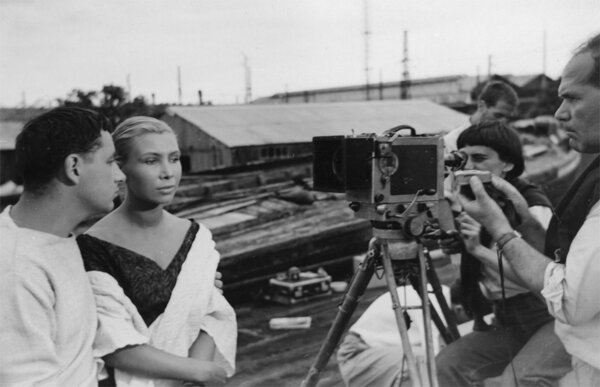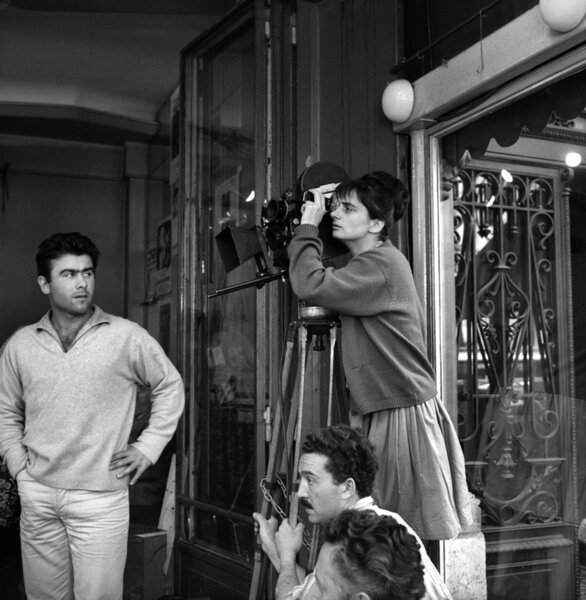The Gaze(s) of Agnès Varda, gleaner of images
It would be an understatement to say that Agnès Varda also liked mirrors (Cléo from 5 to 7, The Beaches of Agnes, to name two) for the way that they allow for the fragmentation of the frame, depth effects, or a way of referring back to oneself. She might have adopted Stendhal’s famous quote from The Red and the Black, transposing it into cinema : “a novel [film] is a mirror carried along a main road.”
Like Mona, the heroine of Vagabond, Agnès Varda never stopped walking by the side of the road, never in the middle of it, bearing a unique gaze on living beings and things, a gaze that was never without empathy but never with compassion.
A singular figure at the margins of the New Wave, those “young Turks” whose cinephile culture and influences she hardly shared (“I can count the number of films I saw before I turned 25 on my hands,” she later said). Agnès Varda joined them and even preceded them in their search for a new form of narration, a “cine-writing” whose form was oriented mainly towards painting, photography and even literature.
Explicit references to works of famous painters (Velázquez’ Rokeby Venus, Millet’s Gleaners, or Goya’s Nude Maja and Clothed Maja), as well as implicit ones (the analysis and use of colour by the Impressionists, which she transposed on the screen as in Le Bonheur with its “complementary shadows”).
One must also of course look towards the primitive painters (Giotto, Van Eyck…) to understand Varda’s taste for “self-portraiture,” which she referred to as a narcissistic effect in The Gleaners and I.
After a time spent at the Ecole du Louvre, Agnès Varda first tried her hand at photography.
“Via her childhood friends from Sète, the three Schlegel sisters, she was introduced to the milieu of amateur and semi-professional theatre. Beginning in 1943, when she was aged only fifteen, she attended a performance of Synge’s La Fontaine aux Saints, Jean Vilar’s first performance on a Parisian stage, which happened to be at the Théâtre de Lancry (11th arrdt.). Then, when Andrée Schlegel married Jean Vilar, the great innovator of post-war French theatrical staging, in 1948 Varda naturally joined the team of the Festival d’art dramatique at Avignon (future Avignon Festival), which was being held for the second year in a row, and then joined the TNP as soon as it was created at the Palais de Chaillot in 1951. Thanks to a used Rolleiflex she purchased, she began to take still photography in 1948.”*

During this “Jean Vilar” period, Agnès Varda shot her first film in 1954, La Pointe Courte, borrowing two young actors, Philippe Noiret and Silvia Monfort, from the world of the theatre. Shot on location and without words with a Parvo Debrie, cinematography by Louis Stein**, edited by Alain Resnais and re-recorded, the film already demonstrated a unique style : “Of course, considering an author’s first film as programmatic for the rest of his or her work is a truism, but it is especially true in the case of Agnès Varda. Pierre Barbaud’s expert music, the structural games of opposition and contrast, the use of non-professional actors, the mix of fiction and documentary, shooting outdoors, the literary and painterly influences are the seeds of Varda’s aesthetic.”***

We know what followed : Cléo from 5 to 7 in 1961 (cinematography by Jean Rabier), Le Bonheur in 1964 (cinematography by the aptly-named Claude Beausoleil, and Jean Rabier), Les Créatures in 1965 (cinematography by Willy Kurant, AFC, ASC), One Sings, the Other Doesn’t in 1977 (cinematography by Charlie Van Damme, AFC and Nurith Aviv), Vagabond in 1985 (cinematography by Patrick Blossier, AFC), Jacquot de Nantes in 1990 (cinematography by Patrick Blossier, Agnès Godard, AFC, and Georges Strouvé, AFC), A Hundred and One Nights (cinematography by Eric Gautier, AFC)…
*Bernard Bastide, “Agnès Varda, une auteur au féminin singulier (1954-1962)” in Agnès Varda : Le cinema et au-delà, ed. Antony Fiant, Roxane Hamery and Eric Thouvenel, Presses universitaires de Rennes, 2009.
**Louis Stein was mainly a major camera operator in the 1940s and 1950s, which from 1943 onwards allowed him to be in contact with the great masters of black-and-white—mainly Jean Bourgoin, but also Michel Kelber, Claude Renoir, Louis Page, and others. After shooting La Pointe Courte, he also worked with Jean Bourgoin on Orson Welles’ Mr Arkadin / Confidential Report.
***François Giraud, on the website DVDClassik.
(Translated from French by Alexander Baron-Raiffe)
- Read the testimonial by Patrick Blossier, AFC
- Read the testimonial by Agnès Godard, AFC
The thumbnail of this article shows Agnès Varda thumbing her nose at her self-portrait taken in Venice in front of a painting by Giuseppe Bellini.
 En
En Fr
Fr




